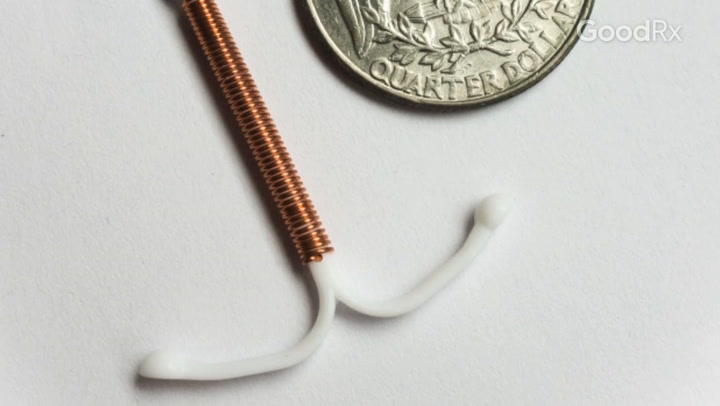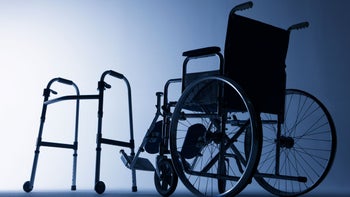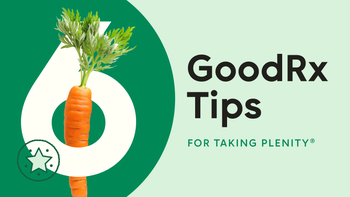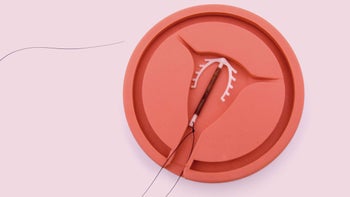
Need a Walker or Wheelchair? How to Find a Free Medical Equipment Loan Program Near You
Key takeaways:
Many people need expensive medical equipment that health insurance may not fully cover, or that they may only use for a short period of time. And millions of Americans don’t have health insurance to help with costs.
Medical equipment loan programs let you borrow walkers, wheelchairs, shower chairs, and even hospital beds and computer devices for free.
Programs vary in their loan requirements, duration, and inventory. A typical loan period is 3 months, but you may be able to extend the term if needed.
Table of contents
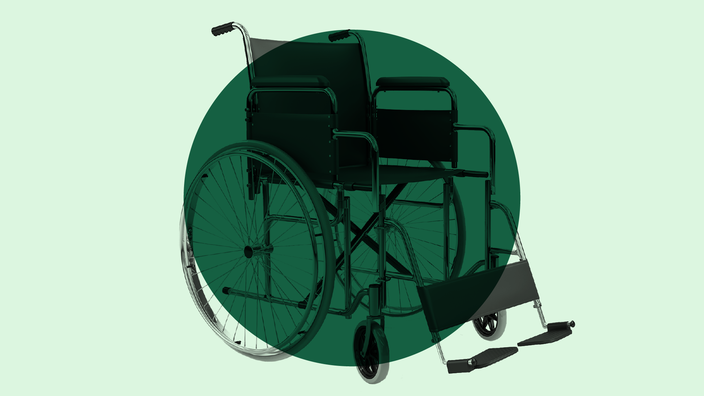
If you have a serious illness, a disability, or hip or knee replacement surgery, your healthcare provider may prescribe medication – and medical equipment, too. They may recommend mobility and bathroom devices and other tools to help aid your balance and save your energy. The goal is to help you be as safe and independent as possible as you heal or adapt to a new medical condition.
But you may be surprised to find out that private insurance or Medicare either doesn’t cover all the gear you need or doesn’t cover it nearly as well as you had hoped. Or maybe you don’t have insurance. That’s when it pays to check out a medical equipment loan program near you.
What are medical equipment loan programs?
Medical equipment loan programs are like libraries for reusable medical items. They’re run by charities and nonprofit groups that loan commonly used medical equipment and sometimes assistive technology to people in need. They’re usually free but may charge a small fee or deposit for more expensive equipment.
Save every month on GLP-1 meds with GoodRx
Save an average of $235 on FDA-approved GLP-1s like Ozempic and Zepbound.

The programs can be formal, such as those affiliated with healthcare systems, universities, or government agencies. Or they can be informal, such as those run out of private garages, says Hannah Wieger, an occupational therapist and coordinator of Nebraska Methodist College’s Equipment Loan Program in Omaha.
Methodist has occupational therapy students help borrowers find a good fit for their needs and home environment. More than 500 equipment loan rentals saved patients about $61,000 in 2021, the group found.
Since the program started in 2016, it has “grown to be able to really serve both those in financial need and those who just need [equipment] short term and want to reduce that medical waste,” Wieger told GoodRx Health.
Items for loan at any given program may include:
Walkers
Rollators (walkers with a seat)
Knee walkers/scooters
Wheelchairs
Crutches
Canes
Shower chairs
Bath benches
Blood pressure monitors
Hospital beds (sometimes with bed rails and trapeze)
Raised toilet seats or toilet risers
Bedside commodes
Patient lifts
Transfer boards
Hip kit items
Portable ramps
At some locations, you also may be able to pick up adult briefs and incontinence products.
More types of durable medical equipment: Walkers, patient lifts, and infusion pumps are a few examples of durable medical equipment (DME) that Medicare and Medicaid might cover for you.
Does Medicare cover outpatient services? Here are some surprising services that Medicare can cover, like diabetes management and home healthcare.
Home hospital beds, made affordable: Read about how you can rent or buy an at-home hospital bed without insurance, how much each model could cost you, and how you can save money on them.
Some programs also lend assistive technology such as alerting devices, assistive listening devices, and TDD equipment for people with hearing loss, or adapted toys and sports equipment.
State chapters of patient advocacy groups may run medical equipment loan programs as well. Examples include:
Read more like this
Explore these related articles, suggested for readers like you.
Lending programs generally require you to:
Talk to staff about your needs. This way, you can avoid borrowing too many items or those that won’t be useful to you.
Have a valid driver’s license or state-issued identification. You can have a caregiver borrow on your behalf.
Sign a contract, agreement, or liability release form.
Pick up the equipment on your own. Items generally can’t be reserved ahead of time or delivered to you.
Return the equipment on time, unless you’ve made other arrangements with the staff.
Community groups that may offer free medical equipment loan closets include:
Churches, synagogues, and religious organizations
Rotary or Lions Clubs
Hospital foundations
What are some other sources for free medical equipment?
You also may find free or low-cost medical equipment at medical thrift stores such as Goodwill. And there are assistance programs that help cover home modifications and items such as grab bars for aging in place.
What should you do if you can’t afford personal medical equipment?
Contact a local medical equipment loan program. Some programs restrict their services or give first priority to people who can’t afford devices because they are uninsured or underinsured.
Contact your local Area Agency on Aging, state Department of Rehabilitation, or your healthcare provider for referrals to a loan closet near you. If you don’t have a local program, try a medical thrift store for low-cost items.
Who can access equipment through a loan program?
Many people can benefit from free medical equipment loan programs, but the programs can have different rules.
Here are a few questions to ask:
Are there age or income eligibility requirements? Some programs are targeted to seniors, people with disabilities, or those with low income, while others are open to all ages and circumstances.
What is your service area? Some programs may require that you live in a certain service area to participate.
Do you have the items I need? Many programs ask that you call ahead to find out what items are available as inventory changes. Some programs may not carry motorized, child-sized, or bariatric equipment, for example. Others may be better set up to work with a referring therapist’s list of needed items, because they are staffed by volunteer occupational therapists or assistive technology specialists who can screen patients for a good fit for use in the home.
Does my healthcare provider have to submit the request? Some programs require referrals or prescriptions.
Is there a fee? Some loan programs may charge a small fee or ask for a small deposit on rollator walkers or wheelchairs that is refunded when you return the equipment. Some ask borrowers who are able to make a cash donation to keep the program going.
How can you find medical equipment loan programs in your area?
States: A-F | G-L | M | N-P | R-W
A-F
Goodwill Gulf Coast (Mobile and locations throughout Alabama and the Florida panhandle). Items available at no cost when available. Contact the medical equipment coordinator at 251-300-6094.
Southwest Lending Closet in Avondale. Loans up to 90 days. Contact 623-932-1016 or hello@swlendingcloset.org.
Loan Closet at Sources for Community Independent Living. Serves four counties in Northwest Arkansas. Contact 479-442-5600.
iCan Tools for Life. Open to all state residents who need reused assistive technology or medical equipment — from adapted toys and vision aids to bath transfer benches. Contact 1-800-828-2799.
The Durable Medical Equipment Aid Society. Serves uninsured and underinsured residents of Los Angeles and Ventura Counties. Contact 818-298-9893.
VNA Health Loan Closet. Serves 4,000 Santa Barbara County residents a year. At 110 years old, it’s one of the longest-running loan closets. Contact 805-965-5555.
ReCares. Serves three sites in Northern California: San Francisco (415-487-5405), Oakland (510-251-2273), and Marin County (415-388-8198). Reuse program that gives away gently used equipment to those in need.
Hospital Equipment Lending Program (HELP) Assistance League of Denver. By appointment only. Contact 720-598-6126 or aldenverhelp@gmail.com.
South Metro Medical Equipment Loan Closet (South metro area of Denver). Equipment can be loaned up to 3 months. Contact 720-443-2013 or info@medicalequipmentloan.org.
Wheel It Forward (Stamford, serving Fairfield and Westchester counties). Loans up to 4 months. By appointment only. Contact 203-652-8600.
Delaware Assistive Technology Initiative (DATI). Loans of medical equipment and assistive technology are free to Delaware residents. Call for an appointment. Contact 302-831-0354.
DC Shares. Loans for city residents with income under $25,000 a year. By appointment only. Contact 202-332-2595.
Iona’s Loan Closet. Loans aging-related items and supplies to any resident in need. Contact 202-895-9448.
Resource Center for Disability Solutions. Serves Brevard County. Loans as long as needed. Contact 321-633-6011.
Brooks Temporary Loan Closet. Serves 5 counties in the Jacksonville area, saving people with disabilities about $200,000 annually. Contact 904-399-8484, ext. 325.
Florida Alliance for Assistive Services & Technology (FAAST) Lending Library (Tallahassee). Loans assistive devices to state residents. Contact 1-844-353-2278.
G-L
FOCUS Loaned Equipment Library. For children with disabilities in Georgia. Loans include child-sized medical and adaptive equipment and beach wheelchairs, for a $100 deposit. Contact 770-234-9111 or devi@focus-ga.org.
Assistive Technology Resource Centers of Hawaii lets people in need of assistive technology “try before they buy” or wait out repairs of their permanent devices with loans up to 6 weeks. Contact them at 808-532-7112 or by email at katie@atrc.org.
Hands of Hope Northwest (Nampa). Loans up to 6 months. Wheelchairs, hospital beds, and knee walkers come with a $50 deposit. Contact 208-461-1473.
Nurses Lending Closet (Palatine). Loans up to 6 months. Contact 847-934-3016.
Illinois Assistive Technology Program Device Reuse. Loans durable medical equipment for as long as needed, and assistive devices for up to 6 weeks for some and other assistive devices in the reuse program for as long as needed. Contact 217-522-7985.
Hendricks County Senior Services Medical Equipment Loaning Closet (Central Indiana). Offers residents a limited supply of mobility equipment. Contact 317-745-4303.
Grace Episcopal Church Medical Lending Closet (Cedar Rapids). Equipment is free, except for a $25 deposit for electronic equipment that’s refunded when you return it within 6 months. Contact 319-362-1929.
Equipment Loan Bank Program (Independence). Contact 785-841-0333.
Medical Loan Closet of Wichita. Equipment loans for a small one-time donation fee. Contact 316-779-8989.
M
Welcome to Housing. A household-goods bank that includes some DME. Free to borrowers in the Bangor area. Contact 207-217-1311.
No Place Like Home. For seniors in the Kennebunkport area. Contact 207-550-2270.
Maryland Loan Closet Directory from the Maryland Department of Disabilities. Contact 1-800-832-4827 or mdtap.general@maryland.gov.
REquipment (Methuen). Open to Massachusetts residents. Asks for a $20 donation for delivery fee if you can’t pick up equipment. Contact 508-713-9690 or info@dmereuse.org.
Concord Council on Aging Medical Equipment Loan Closet. Contact 978-318-3020.
Lending Hands of Michigan. Serves six counties. Loans equipment up to 7 months, except for 3-month loans for knee scooters. Contact 269-567-4381.
Great Lakes Loan Closets. Search by county to find local loan closets in Michigan, Wisconsin, Northern Indiana, and Northern Illinois. Contact janice@loanclosets.org.
ConnectAbility of MN Donated Equipment Program (Waite Park). Open to all state residents. Contact 320-253-0765.
Arrowhead Economic Opportunity Agency Medical Equipment Loan Closet. Items are loaned for a small fee. Contact 1-800-662-5711.
Project START (Madison). 45-day loan program for DME and assistive technology run through the Mississippi Department of Rehabilitation Services. Contact 1-800-852-8328.
GBC Medical Loan Closet (Joplin). Contact 417-986-3131.
Medical Equipment Recycle Program (Hannibal). A program of NorthEast Independent Living Services. Contact 573-221-8282.
Montana Assistive Technology Loan and Exchange Programs. Based at the University of Montana, with offices in Missoula and Billings.
N-P
Methodist Equipment Loan Program (Omaha). Loans up to 6 months. Contact 402-807-3062 and leave a message detailing what you are looking for.
Assistive Technology for All. An online exchange with diverse offerings from the Nebraska Assistive Technology Partnership. Contact 402-471-0734.
The Foundation Assisting Seniors. Equipment loans for residents of Las Vegas or their guests in need. Contact 725-244-4200.
Rye Lions Club Medical Equipment Loan Program. Contact 603-964-8128.
Ingram Senior Center Medical Equipment Loaner Program. Maintains a limited supply of DME in Salem. No charge, and no time limit. Contact 603-890-2190.
Pluckemin Medical Equipment Ministry. Church-based. Contact 908-396-6057.
Back in Use. Recycles assistive and medical devices. Contact 505-341-7171.
MedEquip Loan Closet. Poughkeepsie Reformed Church. Loans up to 6 months. Contact 845-452-0968.
Brookhaven Lending Closet. Offered at three town recreation centers. Contact 631-363-5193.
North Dakota Association for the Disabled. Loans may include adapted vans for pre-approved trips. Contact 1-800-532-6323.
Healthcare Equipment Recycling Organization (HERO). A Fargo-based nonprofit that offers discounted medical equipment and supplies and a reduced copay program for people in need.
Tri-County Independent Living Center Loan Closet (Akron). Loans up to 3 months with a doctor’s prescription. Cash deposit required for wheelchairs, rollators, and wheelchair ramps. Contact 330-762-0007.
Oklahoma ABLE Tech Device Reuse Program. Open to all state residents, with priority given to SoonerCare (Oklahoma Medicaid) members. Contact 405-523-4810.
Ability Connection Oklahoma. Affiliate of United Cerebral Palsy, but loans are for Oklahoma residents with any disability. Contact 405-759-3562.
Access Helps Durable Equipment Loan Program (Medford). No eligibility requirements for residents and will hold an item up to 24 hours. Also provides free wigs to people with cancer and other conditions. By appointment only. Contact 541-690-3972 or medicalequipment@accesshelps.org.
Clearview Disability Resource Center (Pendleton). Loans up to 3 months. Contact 541-276-1130.
UPMC Medical Equipment Recycling Program. Serves Mercer County-area residents in need. Certain equipment requires a prescription. Contact 724-347-6377.
Avon Grove Lions Hospital & Medical Equipment Program. Serves Chester County residents. Contact 484-883-0515.
R-W
Robert J. Allen Medical Equipment Distribution Center (Warwick). Offers mobility aids, lift chairs, transport chairs, and ramps. Contact 401-451-0184 or medcenter@rimasons.org.
The Lending Room (Beaufort). Located across the street from Beaufort Memorial Hospital. Contact 843-524-2554 or lendingroombft@gmail.com.
Spartanburg Shares Medical Loan Closet. Serves Spartanburg County residents. Contact 864-504-3699 or info@spartanburgshares.org.
Medical Equipment Reuse & Recycle Program. All state residents are eligible, but priority goes to South Dakota Medicaid enrollees. Pickup available for large items. You may need to pay a small refurbishment fee. Contact 605-271-5074 or merrinfo@dakotalink.net.
Spark Medical Equipment Loan (Knoxville). Contact 865-219-0130.
Senior Equipment Loan (South Central Middle Tennessee). Contact 931-684-7673.
AGE of Central Texas Health Equipment Lending Program. Also distributes donated adult incontinence products to people in need. Contact 512-600-9288 or email Equipment@AGEofCentralTX.org.
Dieter Center Medical Equipment Loaner Program (Kerrville). Contact 830-792-4044.
Ability 1st Utah Equipment Loan Bank. 90-day equipment loans. Contact 801-850-5568.
Utah Independent Living Center Loan Bank Program. 3-month equipment and assistive device loans, with renewal option. Contact 801-466-5565.
C.I.D.E.R. Equipment Lending Closet (South Hero). Serves the Grand Isle County area in rural Northwest Vermont. Contact 802-372-6425.
The Equipment Connection (Fredericksburg). Open to anyone in need with a temporary or permanent disability. A program of the Disability Resource Center. Contact 540-373-2559.
Bridge Disability Ministries Meyer Medical Equipment Center (Bellevue). Contact 425-885-1006.
Medical Equipment Bank (Lacey/Olympia). Contact 360-456-8810.
Preston County Senior Citizens Medical Equipment Loan Closet. Contact 304-329-0464.
West Virginia Assistive Technology Loan Library. Contact WVATs in Morgantown at 1-800-841-8436.
Medical Equipment Loan Closet (Kenosha County). A program of the Aging & Disability Resource Center. Contact 262-605-6646.
Anna Maria Weston Therapeutic Equipment Lending Library (Lander). Open to Wyoming residents. Contact 307-448-0317 and ask for the therapies supervisor.
Thayne Senior Center Loan Closet (Thayne). Contact 307-883-2678.
Does Medicare help cover the cost of personal medical equipment?
Yes, but coverage varies. Medicare covers some doctor-prescribed durable medical equipment to help with daily living activities for use in the home under Part B. With Part B, Medicare pays 80% of the approved amount as long as you rent or buy from a supplier who accepts assignment. You pay 20% coinsurance after paying the Part B deductible. If you have Medicare Advantage, check your plan because rules and coverage may be different.
Sometimes you may need to wait for a coverage decision as Medicare weighs a letter of medical necessity from your healthcare provider. Not all DME is covered, and Medicare may require you to rent some kinds instead of buying, or vice versa. Contact Medicare at 1-800-633-4227 with questions.
Is medical equipment through a loan program reliable and safe?
Many programs have cleaning protocols that they follow, but some are more compliant with best practices than others. You may want to ask the facility how it cleans and tests equipment. Newly returned equipment that’s awaiting cleaning should be physically separate from equipment that’s ready to rent out.
What are the most expensive types of personal medical equipment?
The big-ticket items for personal medical equipment tend to be those that have power controls or custom features such as:
Power wheelchairs and scooters ($3,000 to $33,000)
Hospital beds ($500 to $5,000)
Patient lifts and transfer aids such as Hoyer or Sara Stedy ($650 to $12,000)
Stair lifts ($2,000 to $5,000)
Manual wheelchairs (around $250) and pressure-reducing cushions such as Roho (about $395) also can add up.
The bottom line
Medical equipment loan programs lend wheelchairs, walkers, and other commonly needed items for free or a small fee or deposit. They can save you money if you don’t have health insurance or face insurance gaps, if you want to test out an item before buying it, if you have a guest with a disability, or if you need a loaner device while your permanent one is being repaired. Loan terms vary, but some programs will work with you to extend the term of your loan if you need to keep the device longer than you originally planned.
Why trust our experts?

References
ALS Association. (n.d.). Equipment loan closet.
Easterseals Northern Ohio. (n.d.). Medical equipment loan.
Easterseals Southern California. (n.d.). Easterseals Southern California.
Goodwill Home Medical Equipment. (n.d.). Goodwillhomemedical.
Medicare.gov. (n.d.). Durable medical equipment (DME) coverage.
Medicare.gov. (n.d.) Find medical equipment & suppliers.
Medicare.gov. (2020). Medicare coverage of durable medical equipment & other devices.
Methodist. (n.d.). Equipment loaning program.
Multiple Sclerosis Society of Portland, Oregon, Inc. (n.d.). Equipment closet.






